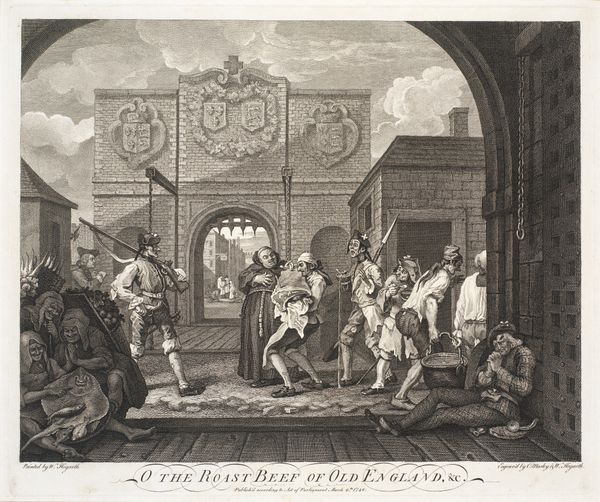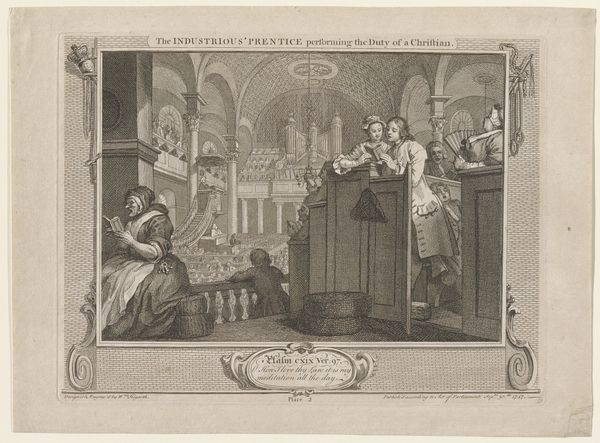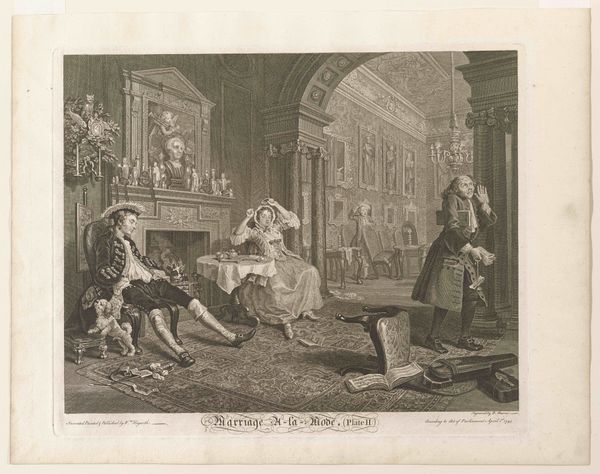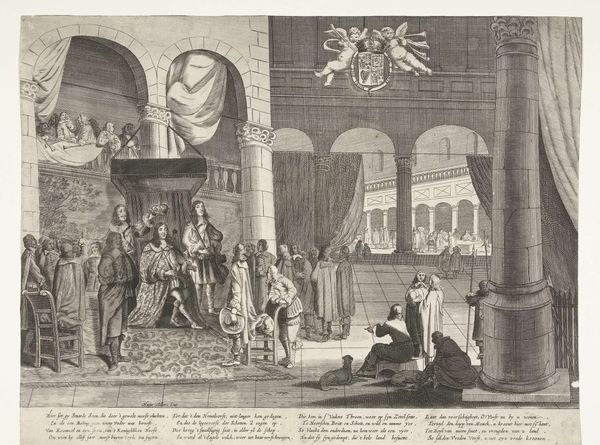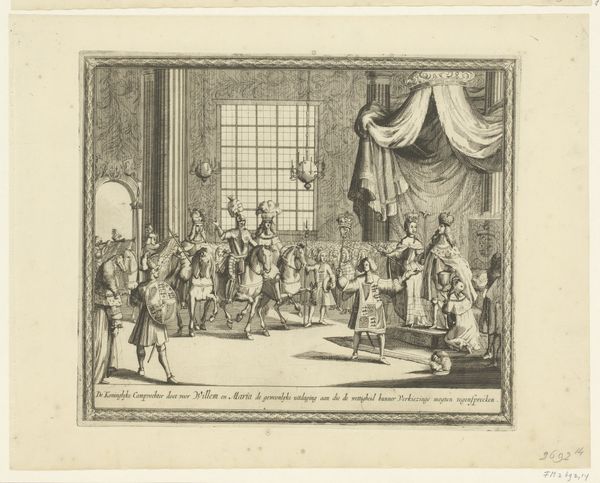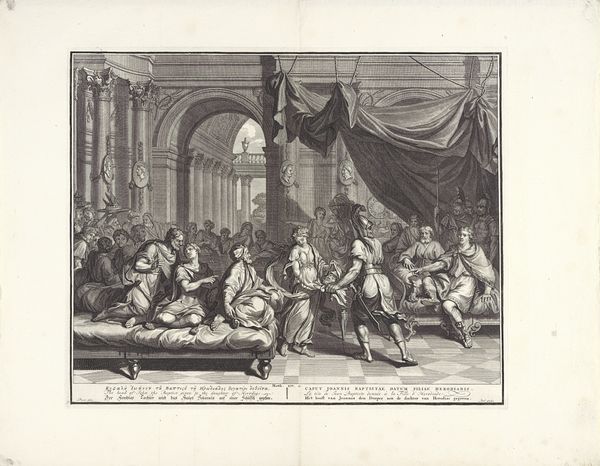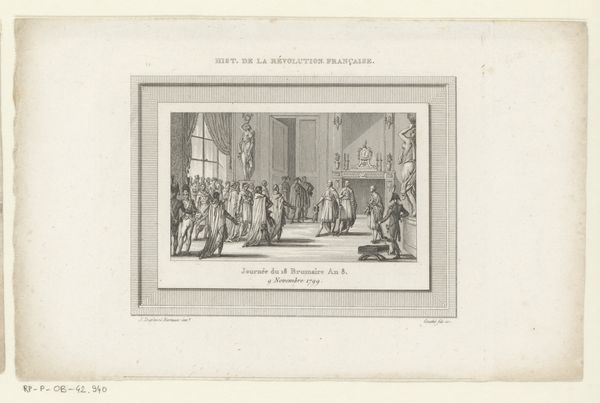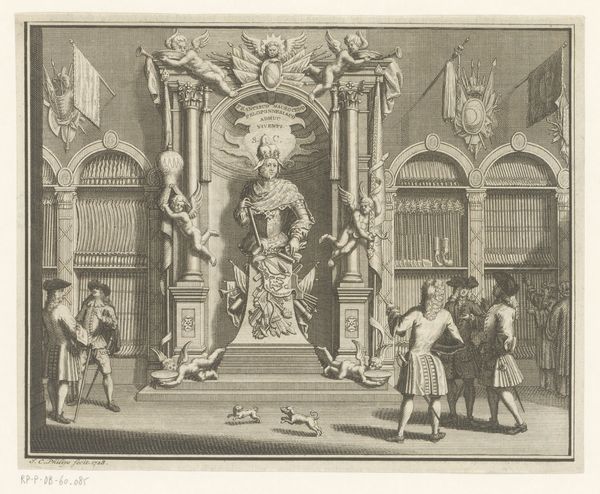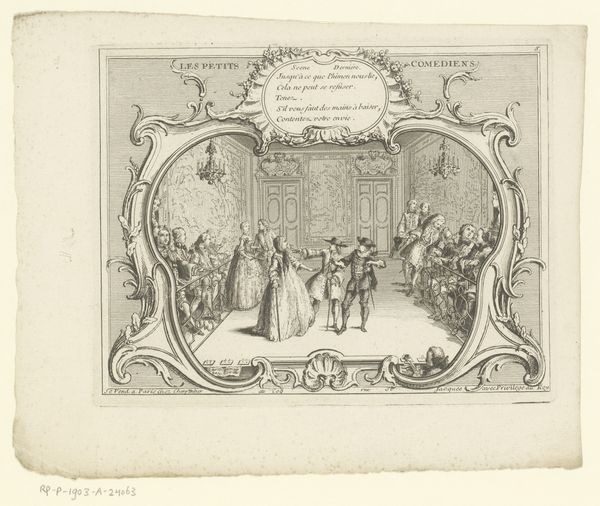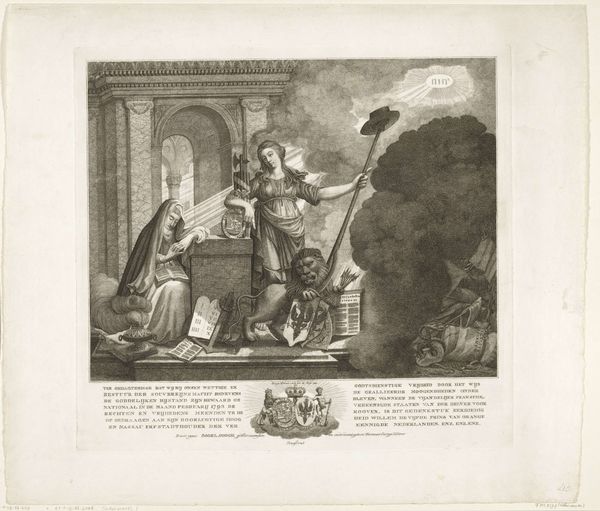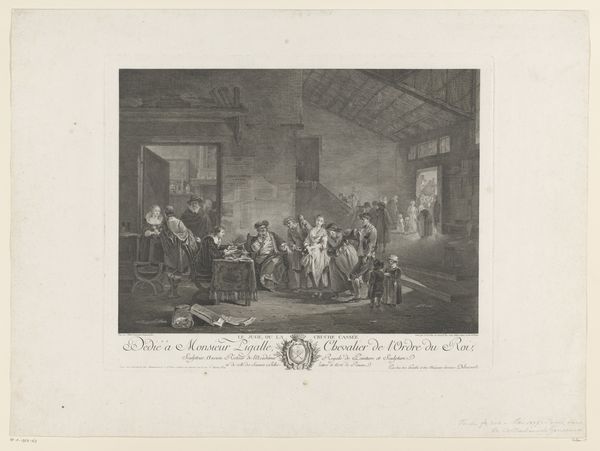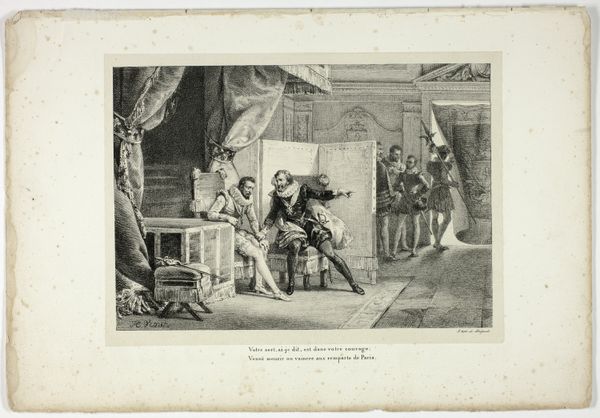
drawing, print, paper, engraving
#
drawing
#
narrative-art
#
baroque
# print
#
figuration
#
paper
#
personal sketchbook
#
england
#
line
#
genre-painting
#
history-painting
#
engraving
Dimensions: 385 × 455 mm (plate); 470 × 629 mm (sheet)
Copyright: Public Domain
Curator: Immediately striking, wouldn’t you agree? The overall atmosphere, created by such distinct, almost theatrical figuration… Editor: It’s incredibly dense! Look at all those layers. What are we seeing here, exactly? Curator: We're looking at "The Roast Beef of Old England," an engraving by William Hogarth from around 1748-49. Currently, this particular print resides here at the Art Institute of Chicago. It is an exemplar of linear, narrative-art; it reminds me of an intricate stage setting in terms of design and compositional complexity. Editor: And what a setting it is! All of this activity—the laborers, the soldiers, that massive side of beef being smuggled through the city gates. I’m immediately thinking about food production and the class distinctions made so visibly evident here. Curator: Indeed, that beef—it's centrally placed, almost fetishized, and acts as the central, structuring element. Note how the gazes of the figures converge, orchestrating a visual hierarchy where the material object acquires immense symbolic value. Semiotically rich, wouldn't you say? Editor: I do, but let's look at it from the perspective of those who likely never tasted such a thing. Look at those thin figures on the left—they remind me of people reliant on meager public rations of produce or day-old bread. Who grew that grain? Who raised the cattle? We are shown only the tail end of the process. Curator: Quite true. And while your focus appropriately redirects us to socio-economic undercurrents, let us not overlook Hogarth’s ingenious management of line. Look at the Baroque sense of movement! From the curve of the arch to the gestures of each individual character, he choreographs our gaze in such a dynamic fashion. Editor: Well, Hogarth was undoubtedly working within the conventions of printmaking, so line, hatching, and cross-hatching, were all the primary tools for producing this social scene—its textures, volumes, and all. Curator: Absolutely. So here, with that balance in mind, it appears we both may continue to extract much critical consideration of this intricate work of art. Editor: Exactly. It’s easy to read at a glance as a straightforward narrative but rewards further inspection into the social, political, and even gastronomic conditions that enabled its creation.
Comments
No comments
Be the first to comment and join the conversation on the ultimate creative platform.
